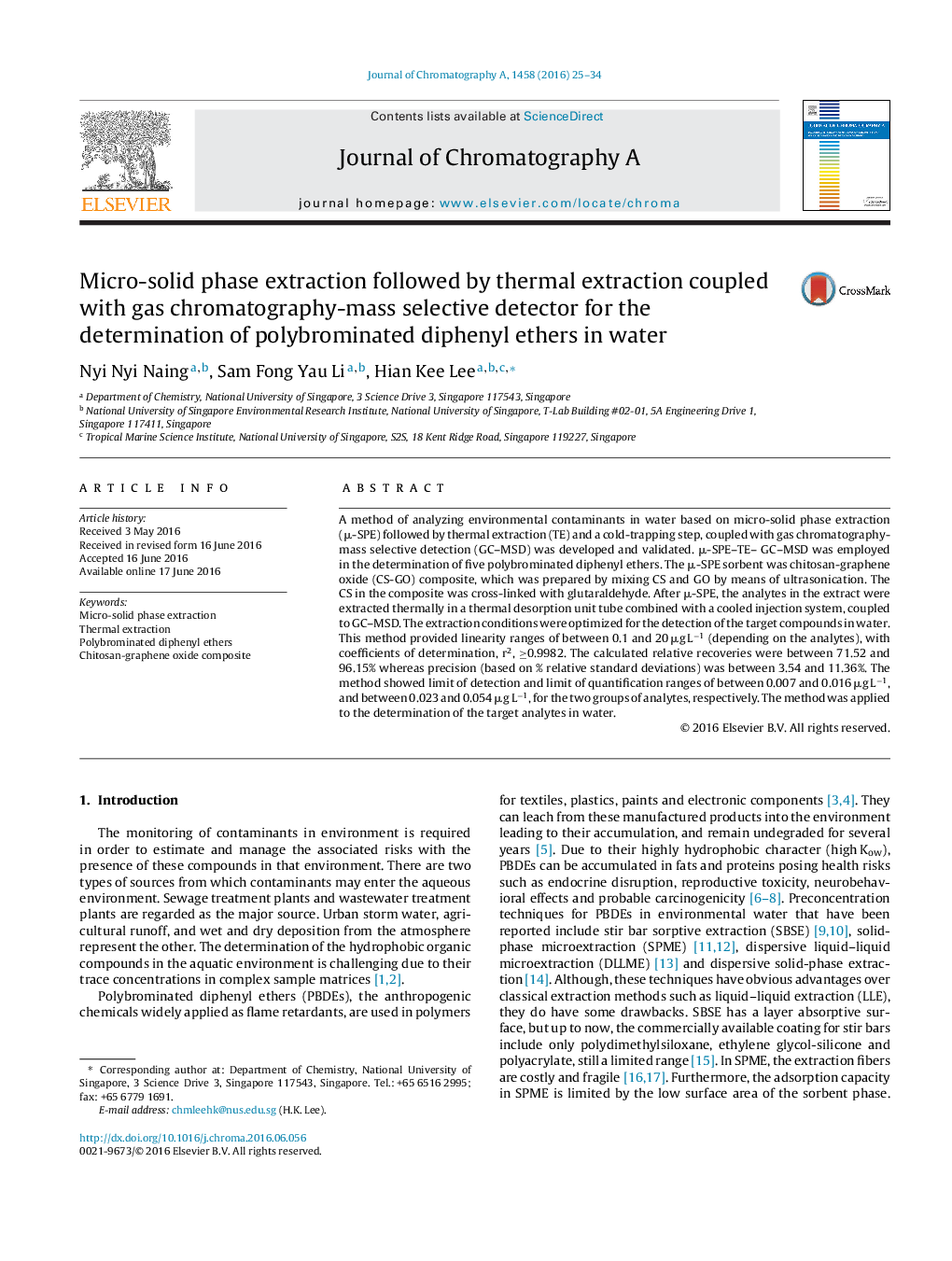| کد مقاله | کد نشریه | سال انتشار | مقاله انگلیسی | نسخه تمام متن |
|---|---|---|---|---|
| 1198429 | 1493468 | 2016 | 10 صفحه PDF | دانلود رایگان |
• CS-GO was used in μ-SPE of five polybrominated diphenyl ethers in water.
• Analytes in the extract were extracted thermally in a TDU coupled to the GC–MSD.
• Lower molecular mass analytes were more amenable to be isolated and detected.
A method of analyzing environmental contaminants in water based on micro-solid phase extraction (μ-SPE) followed by thermal extraction (TE) and a cold-trapping step, coupled with gas chromatography-mass selective detection (GC–MSD) was developed and validated. μ-SPE–TE– GC–MSD was employed in the determination of five polybrominated diphenyl ethers. The μ-SPE sorbent was chitosan-graphene oxide (CS-GO) composite, which was prepared by mixing CS and GO by means of ultrasonication. The CS in the composite was cross-linked with glutaraldehyde. After μ-SPE, the analytes in the extract were extracted thermally in a thermal desorption unit tube combined with a cooled injection system, coupled to GC–MSD. The extraction conditions were optimized for the detection of the target compounds in water. This method provided linearity ranges of between 0.1 and 20 μg L−1 (depending on the analytes), with coefficients of determination, r2, ≥0.9982. The calculated relative recoveries were between 71.52 and 96.15% whereas precision (based on % relative standard deviations) was between 3.54 and 11.36%. The method showed limit of detection and limit of quantification ranges of between 0.007 and 0.016 μg L−1, and between 0.023 and 0.054 μg L−1, for the two groups of analytes, respectively. The method was applied to the determination of the target analytes in water.
Journal: Journal of Chromatography A - Volume 1458, 5 August 2016, Pages 25–34
